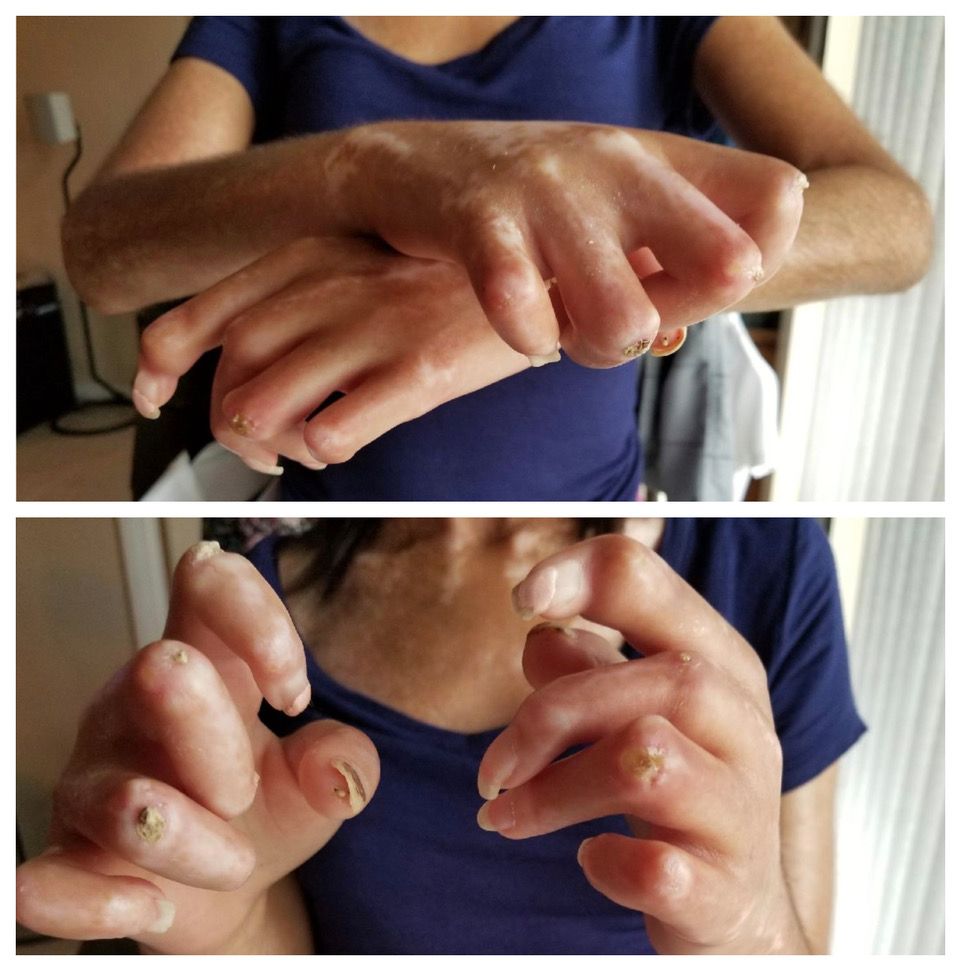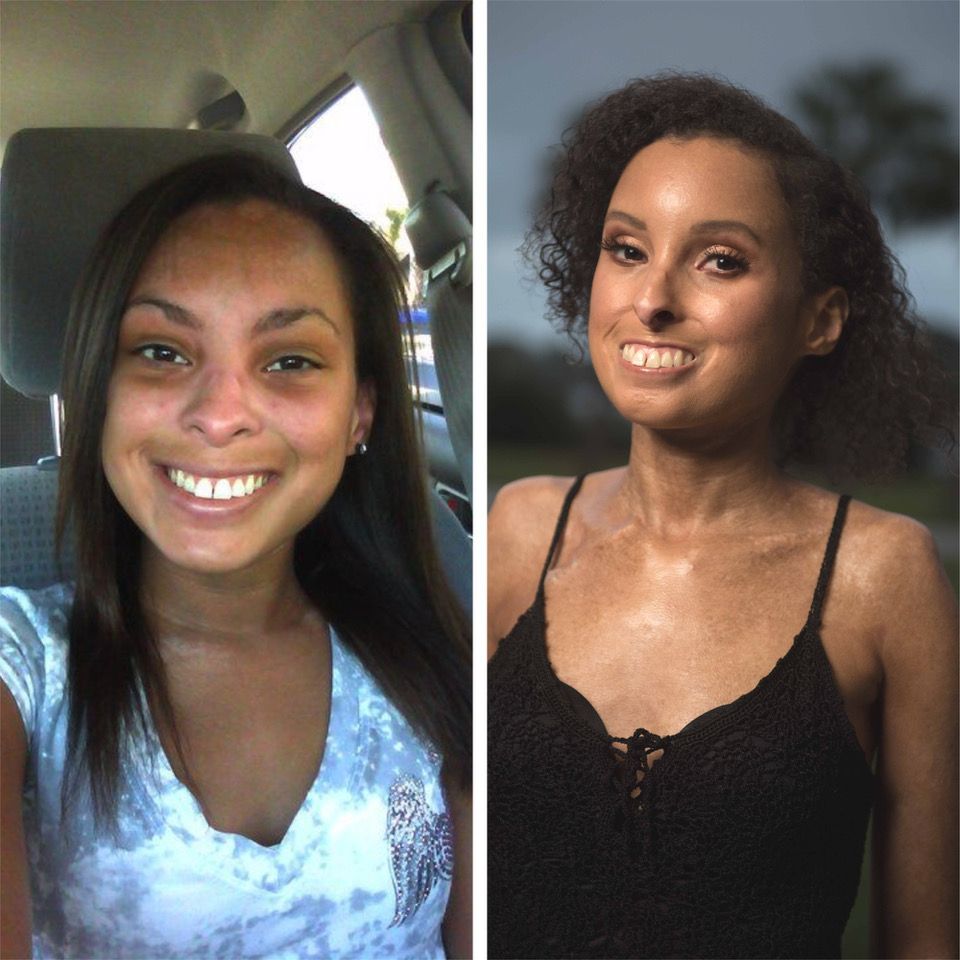When I was 19 years old, I liked going on late-night Walmart runs for fun. One particular night, I was craving junk food, so I hopped in the car and went on a quest for candy and chips. While walking around Walmart pushing the cart, I noticed my hands were very cold, numb, and white. It was as if all the blood drained from my fingers. I snapped a picture of it and thought to myself how strange it was. Little did I know, 3 years later I would be diagnosed with a rare disease called scleroderma.
Scleroderma is an autoimmune disease in which one’s body makes too much collagen. I was diagnosed in 2010, by chance. I went to a primary doctor’s office for a sinus infection, and he ran a full blood panel, including testing for autoimmune markers. Certain numbers came back very high, and I was referred to a rheumatologist, who diagnosed me on the spot. I was frightened and severely depressed. Living with Scleroderma felt as if there was a sewing machine inside the body, tightly weaving collagen through skin and organs. It is a rude awakening when life is going one way and then a unique illness derails the path.
Scleroderma acts as a carpenter, shaping, molding, and damaging the bones as it spreads. My skin is so tight that it cannot be pinched. The progression has been slow over the 14-year period, and I’ve tried to ride the waves as they come. My stiff fingers are stuck in a curled position, which makes it difficult to cut my food or even shower. The stiffening decreases blood flow, and painful, wounds break open, which can take several months to heal. It’s hard to lift my arms up at all, and I haven’t sat on the ground with my legs crossed in years. Scleroderma also can take away your skin color, leaving white splotches behind. Between the achy joints, muscle loss, difficulty breathing, and severe digestive issues, it’s a job in itself to stay positive.
I went through the stages of grief in the beginning. At 22, one is usually planning their career and their future, not planning on how to live. I realized that simmering in denial could end in death, so I had to be proactive. There is no specific medicine created to prevent collagen buildup in scleroderma. Doctors have experimented enough with medications used to treat other diseases, and applied what works, to scleroderma. I am on multiple pills and a monthly IV infusion, which help stabilize the illness.

Now at 34, I wake up to an assistant who helps me start my day. First thing is my morning medications, one for my heart and the other to protect my stomach. After chugging down the pills, we start making breakfast or I will try to get a quick workout in. Other times, I may just lie in bed and have no energy to do anything. If I’m in a chatty mood, I’ll talk with my assistant as she’s scrambling eggs or veggies. After breakfast, I take more meds for inflammation. She helps me tidy up my room, bathe, and run a few errands. Afterwards, I’m fresh-faced and ready to take on the day.
Nature is the voice that soothes my soul, so oftentimes I will go walk by the beach or a local nature trail. I still drive, using multiple knobs attached to my steering wheel to help me rotate the wheel. Driving is the last bit of independence I have left, and I’m gripping to it tightly. Some days, I visit family or friends; in a post-pandemic world, I feel like I have to make up for the time lost in isolation. I’ve grown to enjoy safe, solo adventures, as well. I used to be afraid to venture out by myself, but I’m surprisingly very capable of sipping a martini and eating French fries by the beach. Restaurant staff are friendly enough to assist with small tasks I need help with, such as opening plastic utensils or my straw.

I’ve learned so many lessons through all this, but the main one is that life is short but some days can feel so long. That’s the message that’s drilled into my head every single day. It’s easy to get caught up scrolling through social media for periods of time, but that is not really living. I try to find a way to make things happen and not lean on my disability as an excuse. With anything in life, where there’s a will, there’s certainly a way.


